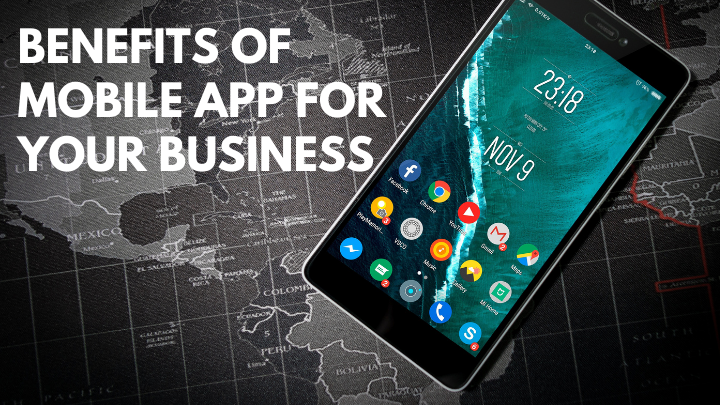Benefits of creating a mobile app for growth hacking of your business.

If you think that mobile apps are exclusive for big-name brands, such as Bank of America and Walmart, you are wrong. Many small and mid-sized businesses now realize the benefits of investing in an effective mobile strategy – one that goes beyond a mobile-friendly website.
These days, you’ll notice that there’s an app for everything. From real estate apps to apps for dieting and fitness, today’s consumers download mobile apps to simplify their lifestyle. As of October 2020, 1.85 million apps are on the iOS App Store and 2.56 million are available via Google’s Play Store. The numbers say it all: apps play a huge part in your consumers’ lives and if you don’t meet your customers where they are, you lose massive marketing opportunities.
Businesses that have their dedicated mobile app are ahead of the marketing game. And you don’t want to fall behind. But in case you’re still unsure why your business should build a mobile platform, consider the following benefits of going down the mobile app path sooner instead of later.
Create a Direct Marketing Channel:
Mobile apps serve many functions: they offer basic information on products and services, search features, prices, booking forms, messengers, user accounts and more.
One of the biggest benefits of having a mobile app is having a central hub of information for your customers – including promotions and sales – right at their fingertips. Push notifications bring you a step closer to direct interaction with customers, reminding the latter about your services and products whenever necessary.
Improve Business visibility:
Statistics report that the average American spends more than two hours a day on their mobile devices. Only a handful of apps make up the bulk of this number, it doesn’t change the fact that users maximize the apps on their phone. Being a part of your consumer’s regular phone habit brands your business to your target market’s consciousness.;
Build Brand Recognition:
Mobile apps contribute greatly to your business’s brand awareness.
In terms of branding, think of the mobile app as a blank billboard sign. You’re free to do whatever you want with it. But your main goal is to create an app that offers features your customers will find useful but must also be well-designed.
In terms of recognition, the more often you involve your customer with your app, the better your chances of enticing them to buy your products and services. Advertising calls this “effective frequency,” which is the number of times a customer must be exposed to your advertising message before you get their attention.
Provide value to consumers:
Apart from providing customers with on-hand information, consider digitalizing your current loyalty program. Use the customer data gathered from your app to customize your loyalty programs.
Switch from the traditional point-collection card to mobile app rewards. When customers appreciate your rewards, expect more return customers and mobile app downloads. Use the platform PunchMe to create a mobile phone-based loyalty program.
Improve customer engagement:
Customers need a way to immediately reach you. A help desk feature within your app greatly improves customer communication. For example, OpenTable established its business model around the help desk principle. Instead of calling the restaurant to reserve a table, you can book one on their reservation platform. Customers appreciate businesses that go the extra mile to simplify their services and make it easy to procure their products and other offers.
How do you build an App for Your Business?
There are two steps to success:
- Requirement analysis and idea description.
Get in touch with a software company and give them a clear description of your application. The company will then give you a cost estimate using the app you referred to as a reference. You may also have to select between two pricing models: fixed price (FP) or Time & Material (T&M). The former allows you to plan development costs ahead of time while the latter can be a more hands-on approach to the project. Next, you’ll choose your target platform, which is often iOS and Android, so you’ll have to build two native apps to ensure a smooth experience on multiple devices. - Design and development.
Mobile app design involves more than the user interface (UI). It also includes the server, which is built with different web technologies like .Net, PHP, Ruby and more. Most mobile apps include helpful features for customers, which include live chat, loyalty program elements, social features and payments.
A mobile app is a standard component of any business in the future. The choice you make today can set the foundation of your success tomorrow. Be one of the first stories of victory by building an app today.
